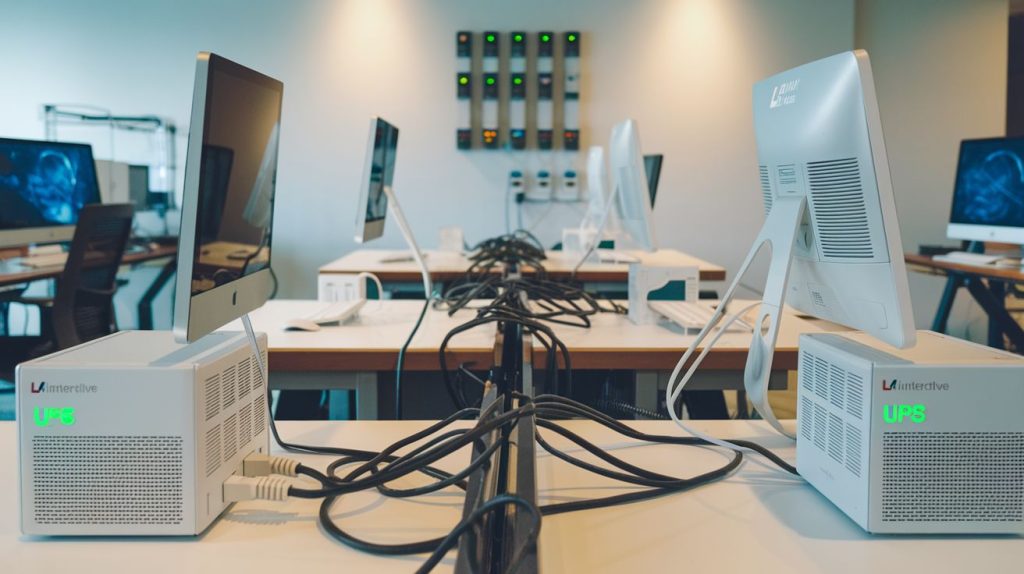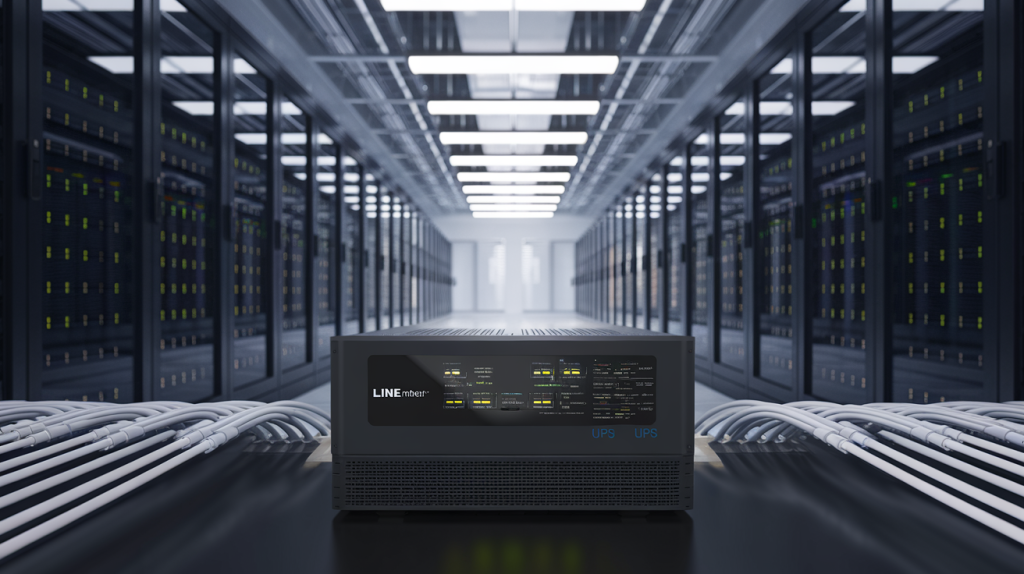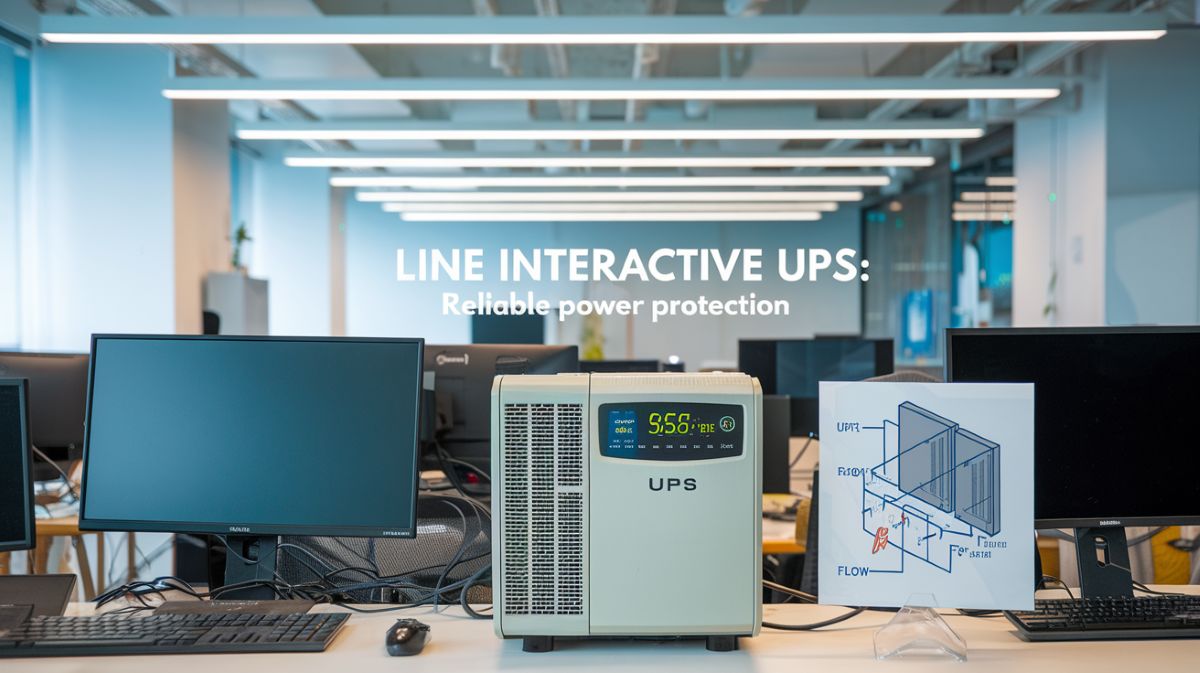Have you ever experienced the frustration of losing important work due to sudden power outages? 🌩️💻 In today’s digital age, where our lives and businesses heavily rely on electronic devices, uninterrupted power supply is more crucial than ever. Enter the Line Interactive UPS – a powerful solution that’s revolutionizing how we protect our valuable equipment and data.
But what exactly is a Line Interactive UPS, and why is it gaining so much attention? This innovative technology offers a unique blend of reliability, efficiency, and cost-effectiveness that sets it apart from traditional power backup systems. Whether you’re a tech enthusiast, a business owner, or simply someone looking to safeguard your electronic investments, understanding the ins and outs of Line Interactive UPS could be a game-changer for you.
In this comprehensive guide, we’ll dive deep into the world of Line Interactive UPS systems. We’ll explore their operating principles, highlight their advantages, and discuss ideal applications. By the end, you’ll have all the knowledge you need to make an informed decision about choosing the right Line Interactive UPS for your needs. Let’s embark on this electrifying journey to uncover the power behind Line Interactive UPS! ⚡🔋
Understanding Line Interactive UPS
Definition and basic concept
A Line Interactive UPS (Uninterruptible Power Supply) is a sophisticated power protection device designed to provide reliable backup power and voltage regulation for critical equipment. It serves as an intermediary between the main power source and connected devices, offering enhanced protection against power fluctuations and outages.
Key components of a Line Interactive UPS
A Line Interactive UPS consists of several essential components:
- Battery
- Inverter
- Automatic Voltage Regulator (AVR)
- Transfer switch
| Component | Function |
|---|---|
| Battery | Stores energy for backup power |
| Inverter | Converts DC power to AC power |
| AVR | Regulates voltage fluctuations |
| Transfer switch | Switches between utility and battery power |
How it differs from other UPS types
Line Interactive UPS differs from other types in several ways:
- Voltage regulation: Unlike standby UPS, Line Interactive UPS can handle voltage fluctuations without switching to battery power.
- Efficiency: More energy-efficient than online UPS systems.
- Cost: Generally less expensive than online UPS but more costly than standby UPS.
- Response time: Faster than standby UPS but slower than online UPS.
Line Interactive UPS strikes a balance between cost-effectiveness and performance, making it suitable for various applications. Now that we understand its basic concept and components, let’s explore how it operates.
Operating Principles of Line Interactive UPS
Normal operation mode
During normal operation, a Line Interactive UPS functions as a power conditioner, providing clean and stable power to connected equipment. The UPS continuously monitors incoming voltage and performs automatic voltage regulation when necessary.
| Mode | Input Power | UPS Action |
|---|---|---|
| Normal | Within acceptable range | Passes power through with minimal intervention |
| Buck | Voltage too high | Reduces voltage to safe levels |
| Boost | Voltage too low | Increases voltage to required levels |
Battery mode during power outages
When a power outage occurs, the Line Interactive UPS seamlessly switches to battery power:
- Detects loss of utility power
- Activates inverter to convert DC battery power to AC
- Supplies connected equipment with battery-derived power
- Monitors for return of utility power
Voltage regulation capabilities
Line Interactive UPS systems employ automatic voltage regulation (AVR) to maintain stable output voltage:
- Uses tap-changing transformers or electronic circuitry
- Corrects voltage fluctuations without switching to battery power
- Extends battery life by reducing unnecessary discharges
Power factor correction
Power factor correction in Line Interactive UPS systems:
- Improves overall power efficiency
- Reduces harmonic distortion
- Minimizes reactive power consumption
- Enhances compatibility with various types of loads
These operating principles ensure that Line Interactive UPS systems provide reliable power protection and conditioning for a wide range of applications.
Advantages of Line Interactive UPS
Cost-effectiveness
Line Interactive UPS systems offer significant cost advantages compared to other UPS types. Their simpler design and fewer components result in lower initial purchase costs and reduced maintenance expenses over time. Here’s a breakdown of the cost benefits:
| Cost Factor | Line Interactive UPS | Other UPS Types |
|---|---|---|
| Initial Cost | Lower | Higher |
| Maintenance | Less frequent | More frequent |
| Energy Consumption | Lower | Higher |
| Replacement Parts | Fewer | More |
Energy efficiency
These systems are highly energy-efficient due to their unique operating principles:
- Normal mode operation uses minimal power
- Automatic Voltage Regulation (AVR) adjusts voltage without battery power
- Less heat generation, reducing cooling costs
Longer battery life
Line Interactive UPS systems contribute to extended battery life through:
- Less frequent battery usage
- Reduced heat exposure
- Efficient charging mechanisms
Simplified maintenance
Maintenance of Line Interactive UPS is straightforward, making it ideal for various settings:
- Fewer components to service
- Easy-to-replace batteries
- Self-diagnostic capabilities
- Lower technical expertise required for routine checks
With these advantages in mind, it’s clear why Line Interactive UPS systems are popular choices for many applications. Next, we’ll explore the specific use cases where these systems truly shine.
Applications and Ideal Use Cases

A. Small to medium-sized businesses
Line Interactive UPS systems are an excellent choice for small to medium-sized businesses due to their balance of features and cost-effectiveness. These organizations often require reliable power protection without the need for more expensive double-conversion UPS systems.
| Business Type | Line Interactive UPS Benefits |
|---|---|
| Retail stores | Protects POS systems and inventory management computers |
| Law firms | Ensures uninterrupted access to critical client data |
| Medical clinics | Safeguards patient records and diagnostic equipment |
| Design studios | Prevents loss of work on resource-intensive projects |
B. Home office setups
With the rise of remote work, home office setups have become increasingly common. Line Interactive UPS systems are ideal for these environments, providing:
- Protection for personal computers and peripherals
- Voltage regulation for areas with unstable power
- Sufficient battery backup for short outages
- Compact design suitable for limited space
C. Network and server protection
For businesses relying on local servers and network infrastructure, Line Interactive UPS systems offer crucial protection:
- Safeguarding against data loss during unexpected shutdowns
- Maintaining network uptime during brief power fluctuations
- Providing time for proper server shutdown procedures
- Supporting critical network switches and routers
D. Point-of-sale systems
Retail businesses depend heavily on their point-of-sale systems. Line Interactive UPS units are particularly well-suited for these applications:
- Ensuring continuous operation during power dips
- Protecting sensitive electronic components from power surges
- Allowing completion of transactions during brief outages
- Maintaining connectivity for cloud-based POS systems
Now that we’ve explored the ideal applications for Line Interactive UPS systems, let’s examine how to choose the right one for your specific needs.
Choosing the Right Line Interactive UPS
A. Determining power requirements
When choosing a Line Interactive UPS, accurately determining your power requirements is crucial. Start by calculating the total power consumption of all connected devices:
- List all equipment to be protected
- Note the wattage for each device
- Sum up the total wattage
| Device Type | Typical Wattage Range |
|---|---|
| Desktop PC | 200-400W |
| Server | 500-1000W |
| Network Switch | 50-150W |
| Printer | 50-100W |
Add a 20-30% buffer to account for power spikes and future expansion. Remember, VA (Volt-Ampere) ratings are typically higher than wattage ratings.
B. Evaluating runtime needs
Determine how long you need your equipment to run during a power outage:
- Short-term (5-15 minutes): For safe shutdown
- Medium-term (30-60 minutes): To ride out brief outages
- Long-term (1+ hours): For critical operations
Longer runtimes require larger battery capacity, increasing UPS size and cost.
C. Considering scalability options
For growing businesses, scalability is key:
- Modular UPS systems allow easy capacity expansion
- Some models support parallel operation for increased power and redundancy
- Consider future power needs and choose a UPS with room for growth
D. Assessing software management features
Modern Line Interactive UPS systems offer advanced management features:
- Remote monitoring and control
- Automated shutdowns
- Power event logging and analysis
- Integration with existing network management systems
Choose software that aligns with your IT infrastructure and management needs.
E. Warranty and support considerations
Lastly, evaluate the warranty and support options:
- Look for at least a 2-year warranty on the UPS unit
- Check battery warranty separately (typically 1-3 years)
- Consider extended warranty options for critical applications
- Assess the manufacturer’s reputation for customer support and service availability
By carefully considering these factors, you can select a Line Interactive UPS that best meets your specific power protection needs and ensures the reliability of your critical equipment.

A Line Interactive UPS offers a reliable and cost-effective power protection solution for various applications. By combining voltage regulation and battery backup capabilities, it effectively safeguards equipment from common power issues such as brownouts, voltage fluctuations, and short-term outages. This type of UPS is particularly well-suited for small to medium-sized businesses, home offices, and environments with relatively stable power conditions.
When selecting a Line Interactive UPS, consider factors such as power capacity, battery runtime, and compatibility with your equipment. By choosing the right Line Interactive UPS for your needs, you can ensure uninterrupted operations, protect valuable data, and extend the lifespan of your electronic devices. Investing in a quality Line Interactive UPS provides peace of mind and helps maintain productivity in the face of unpredictable power situations.
